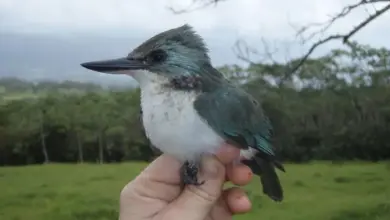Zambian Barbets or Chaplin’s Barbets
The Zambian Barbets (Lybius chaplini) are rare and endangered African Barbets that were previously known as Chaplin’s Barbets – in honor of Sir Francis Drummond Percy Chaplin – a former colonial governor. This species has been renamed to emphasize its status as Zambia’s only true endemic bird species.
Distribution / Range
The Zambian Barbets are endemic to south central Zambia, where they are restricted to an area between the upper Kafue River to Kabanga in the Kalomo District. They are found almost exclusively in open woodland where the fig, Ficus sycomorus – their favorite food source – is abundant
They usually occur in small groups of two to six individuals, and these groups aggressively defend their territories against intruders.
Description
The Zambian Barbets measure about 19 cm in length (including the tail) and weigh between 64 – 75 grams. This plump-looking barbet has a large head and a heavy bill fringed with bristles.
Its ruffled plumage is mostly white, except for the distinctive red markings around the eyes. The tail is black and the black wigs are edged yellow.
Song / Vocalizations
As part of its call, it snaps its bill loudly together while emitting a chorus of buzzy, grating notes. Its song is described as an accelerating, noisy cackle.
Diet / Feeding
These mostly solitary birds eat a variety of fruits, including figs (primarily Ficus sycomorus). They will also visit plantations and feed on cultivated fruit and vegetables. Fruit is eaten whole and indigestible material such as seed pits is regurgitated later. They are believed to be important agents in seed dispersal.
In addition to fruit, they also eat a wide range of insects, including ants, cicadas, dragonflies, crickets, locusts, beetles, moths, and mantids, as well as scorpions and centipedes. On occasion, they may also feed on lizards, frogs, and geckos.
Nesting / Breeding
The Zambian Barbets’ breeding season stretches from August through November.
They typically nest in the cavities in the branches of dead or live fig trees. The hen usually lays between 2 to 4 eggs that are incubated for 13 – 15 days.
Nesting duties are shared by both parents. Their nests are sometimes parasitized by Lesser Honeyguides (Indicator minor) – which lay their eggs into the Zambian Barbets’ nests for them to incubate and raise the young as their own.
African Barbet Information … African Barbet Species Index … African Barbet Photo Gallery




